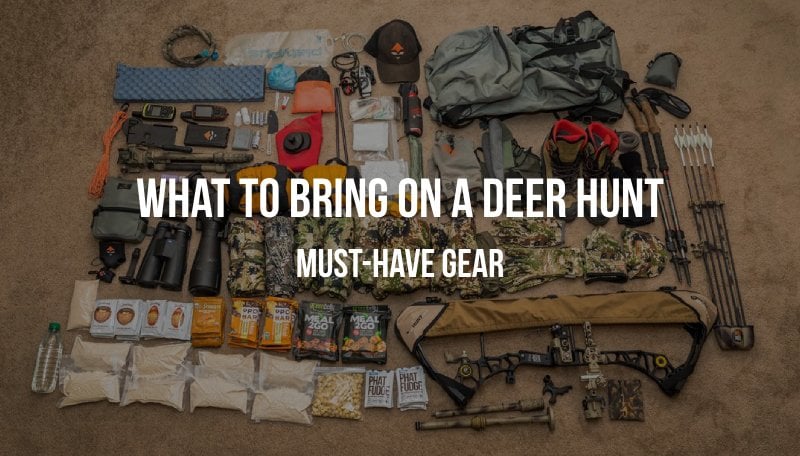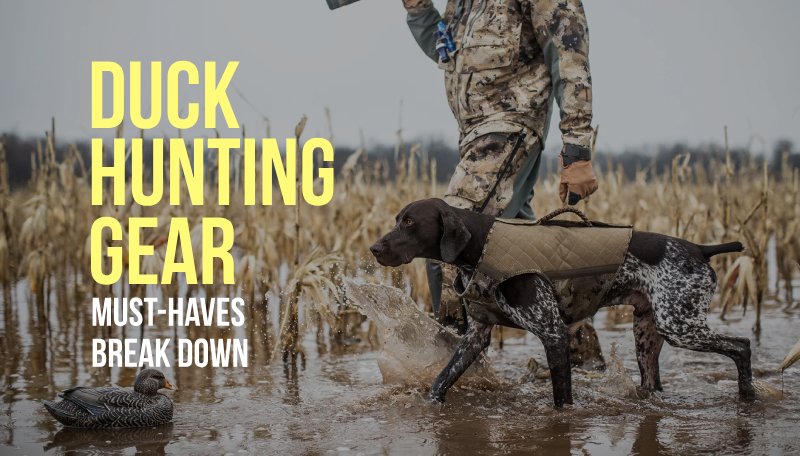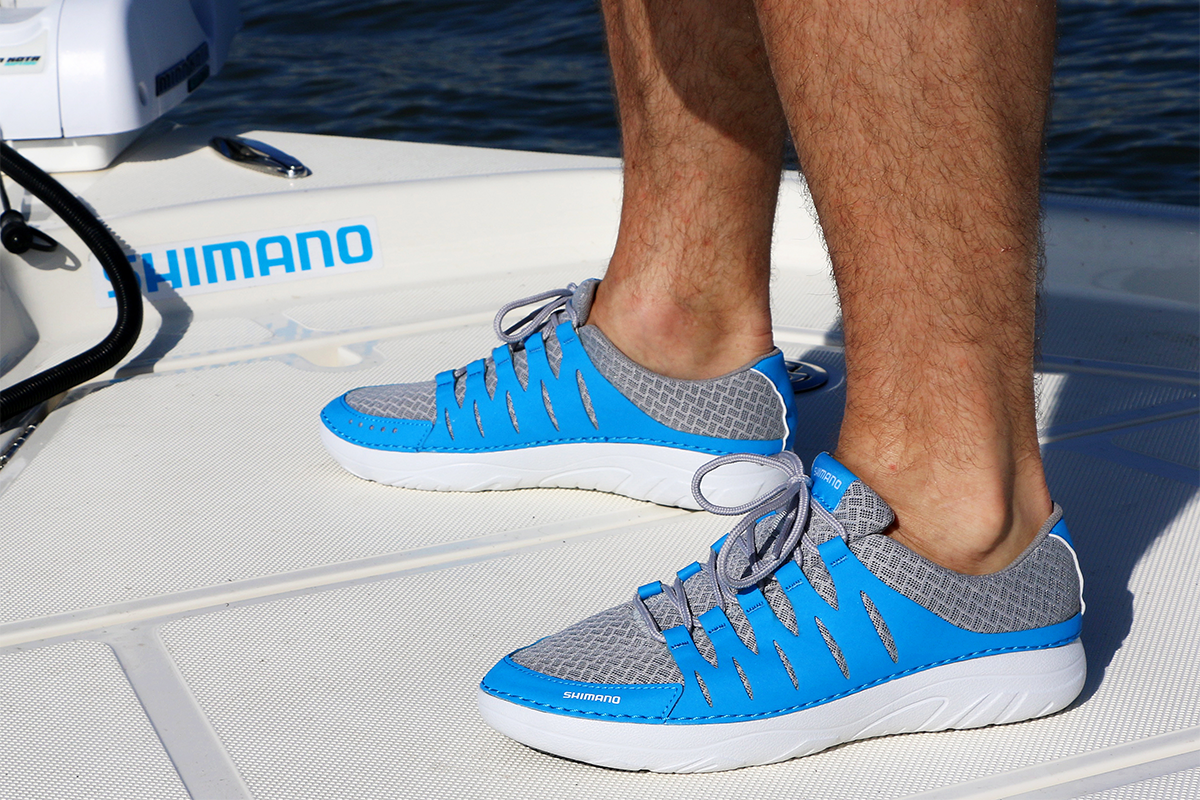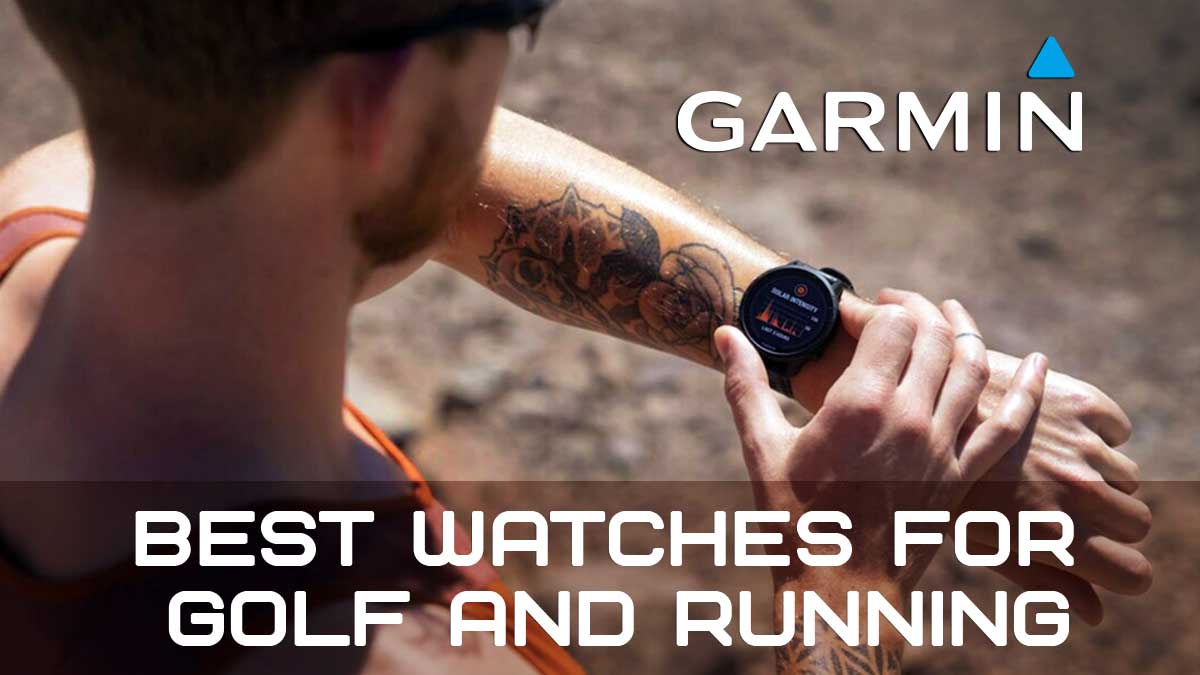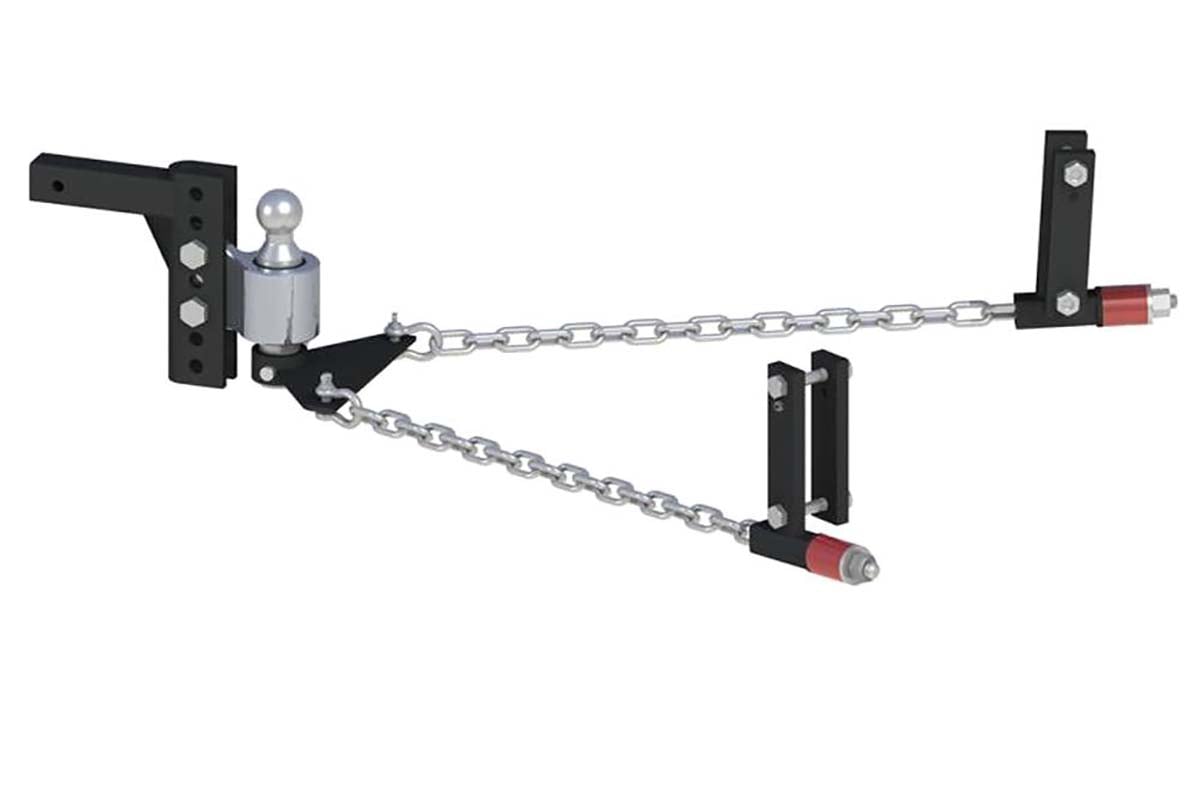In the modern world of deer hunting, it’s not just about skill and experience. Your gear matters too. It can be the difference between a successful hunt and a day spent merely enjoying nature. In this article, we’re going to explore the must-have deer hunting gear for a successful season. We’ve done our homework and compiled a list of quality options for you to consider. Let’s get started.
Quick Deer Hunting Gear Checklist:
Deer Hunting Camo
Blaze Orange
Big-Game Backpack
Deer Hunting Supplies (game calls, wind checker, etc)
Optics & Electronics (scope, bino, rangefinder, etc.)
Treestand Supplies
Full Deer Hunting Gear Checklist
Deer Hunting Camo
The right camouflage could potentially make a difference, but not always. Let’s talk about deer vision first. Deer are red-green color blind, and their visual clarity isn’t as sharp as ours. They rely more on spotting contrasts rather than clear-cut details. So the key to effective camo is disrupting your human outline. This is where break-up camo comes into play, designed to confuse a deer’s perception of your shape.
Break-up deer camo has micro and macro patterns that work at short and medium distances. However, for long-range hunting, such as from 200-400 yards, camo becomes far less critical to success. So, camouflage is essential for those who prefer to stalk deer, for bowhunters, and for treestand hunters during the late season when there’s no foliage to use to their advantage.

KINGS CAMO Men's XKG Lone Peak XK7 Jacket
$229.99
Price accurate at time of writing
Features:
- Four-way stretch polyester
- Polygiene Odor Control Technology
- Tri-Laminate Soft Shell
- Highly Water & Wind Resistant
- 20,000/20,000 Waterproof/Breathability Rating
- Taper Fit for High Activity
- Two Side & Two Chest Zip Pockets
- Neoprene Stretch Velcro Storm Cuffs
Now, our recommendations. King’s Camo offers different camo patterns, each optimized for specific terrains and hunting methods. For instance, their XK7 pattern is for early season and tree stand hunters. Its high-contrast micro and macro patterns mimic the bright sky and the darker underside of foliage, rocks, and bushes, providing a perfect disguise.
And don’t forget about clothing accessories like winter hunting gloves that will prevent your hands from stiffening up during those late-season hunts, and a hat will keep your head warm.
Blaze Orange
Many states have laws requiring hunters to wear a certain amount of blaze orange clothing, typically a hat or vest, during deer season. Blaze orange stands out against the natural environment, making hunters easily visible to each other but not deer as they are color blind to orange.

RIVERS WEST Cold Canyon Blaze Orange Vest
$46.99 - $66.99
Price accurate at time of writing
Features:
- 100% seam-sealed
- 100% windproof
- Welted front zipper
- Zippered handwarmer pockets
- Needle punch upper yolk for added warmth
- Micro-fleece lining
You’re going to love this Rivers West vest. It’s not your run-of-the-mill blaze hunting vest – this one is built to last. It’s windproof and water-resistant and has stretch-fleece side panels and a fleece collar for added warmth. But perhaps the best part is its softshell design. It stays whisper-quiet as you move, which is key when you’re trying to get close to deer.
Hunting Backpack
A good big-game pack needs to be capable of handling massive loads, especially when you’ve been fortunate enough to bring down a deer. They should be durable, water-resistant, and able to carry lots of deer hunting gear.
This Badlands backpack is a deer hunter’s dream. Its split-pack design with an integrated meat shelf system makes carrying game a breeze. The Strata Suspension System allows for heavy loadouts, perfect for long trips. Plus, it can carry both rifles and bows and is hydration compatible up to 3L. The camo color blends with the hunting environment, enhancing stealth.
Must-Have Deer Hunting Supplies
While camouflage is a good tactic, deer mostly rely on their sense of smell and hearing. You’ll need several things to outsmart these creatures.
Deer Calls
First on the list is a good deer call. Using the Primos Lil’ Can deer call, you can mimic the sounds of a doe in heat.

PRIMOS The Lil' Can Deer Call
$17.73
Price accurate at time of writing
Features:
- Smaller for higher pitched bleats of young does
- Perfect for early season hunting
While with the Primos Grunter deer call, you can call a buck looking for a fight. This can lure the deer into your range and give you that perfect shot.

PRIMOS Still Grunter Deer Call
$17.99
Price accurate at time of writing
Features:
- 6-in-1! adjustable reed assembly allows for grunts and bleats
- Compact size for nasal grunts
Wind Checker
Next, we’ve got the wind checker. Deer have an incredibly keen sense of smell. If they catch your scent, they’re gone. A wind checker helps you understand the wind direction so you can position yourself downwind of the deer.

PRIMOS 2oz Wind Checker
$17.17
Price accurate at time of writing
Features:
- A perfect mist of unscented powder gives minute-by-minute update on wind direction and your scent
- Large 2-ounce bottle
Scent Blocker
Speaking of smell, scent blockers aren’t necessary if you know how to use the wind, but they can really ease the process. These are designed to mask human odors, making you virtually invisible to a deer’s nose. Apply it to your clothes, boots, and hunting gear, and you’ll become a ghost in the woods.
Hunting Knife & Kill Kit
Then there’s the hunting knife. You’ll use it for field dressing, skinning, and quartering. You can try this knife combo set. The blade is made from D2 steel, known for wear resistance, high hardness, and good corrosion resistance. The drop point blade is great for controlled slicing, while the large capacity guthook will save you a lot of time gutting the deer.
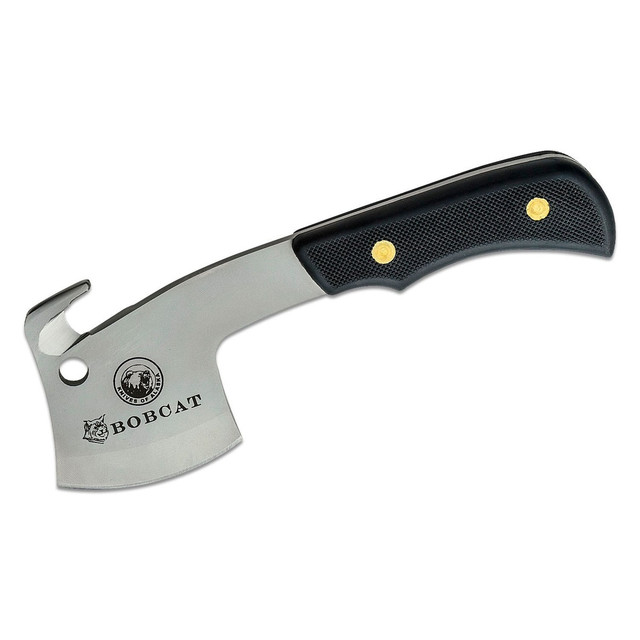
KNIVES OF ALASKA Bobcat 2.5in Suregrip Mini Hatchet
$128.99
Price accurate at time of writing
Features:
- Lightweight
- Compact easy to carry
- Gut hook feature
- Leather carrying sheath
- Excellent for making fire kindling
Of course, field-dressing a deer with only a knife isn’t the best approach. Ensure you have the complete field dressing kit, including rubber gloves, a bone saw, ropes, a deer drag harness, flagging tape, and game bags.
Must-Have Deer Hunting Optics & Electronics
Rangefinder
When hunting deer in regions with diverse terrain or from an elevated treestand, a rangefinder with angle compensation becomes a vital piece of equipment. This unique feature considers the angle at which you’re shooting and adjusts the distance measurement accordingly. It’s crucial because shooting at an angle can significantly affect the trajectory of your arrow or bullet.
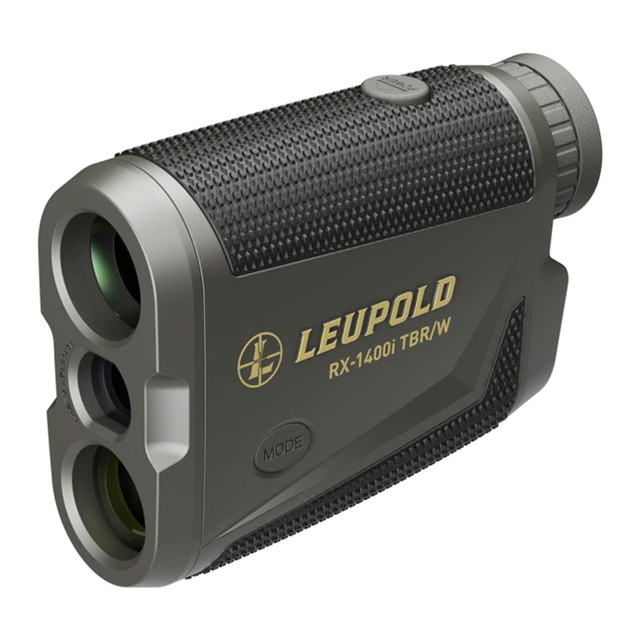
LEUPOLD RX-1400i TBR/W Gen 2 Flightpath Rangefinder
$199.99
Price accurate at time of writing
Features:
- Line of sight (los)
- Bow mode
- TBR-W
- Last target mode
- Flightpath
- Toled
- Selectable reticles
For excellent value and quality, take a look at the Leupold RX-1400i TBR/W Gen 2 Flightpath rangefinder, loaded with features that cater to both bow and rifle hunters. Its Flightpath technology uses your bow’s ballistics to display the highest point of your arrow’s flight, while for rifle hunters, the rangefinder can calculate both ballistic (horizontal) and line of sight range, providing important data for long-distance shots. And unlike many affordable rangefinders, it features a bright red display, not a black LCD, which makes it easy to see in low-light conditions.
Scope
A good scope can help you make accurate shots from long distances. The Leupold VX-3HD 4.5-14x40mm scope is considered one of the best value scopes for deer hunting. This scope offers fantastic quality and precision and is equipped with the Custom Dial System. You can order a custom elevation dial tailored to your specific rifle and ammunition. Leupold then creates a customized elevation dial that corresponds directly to your ballistics. This dial is marked with different distances instead of the traditional MOA or MIL adjustments.
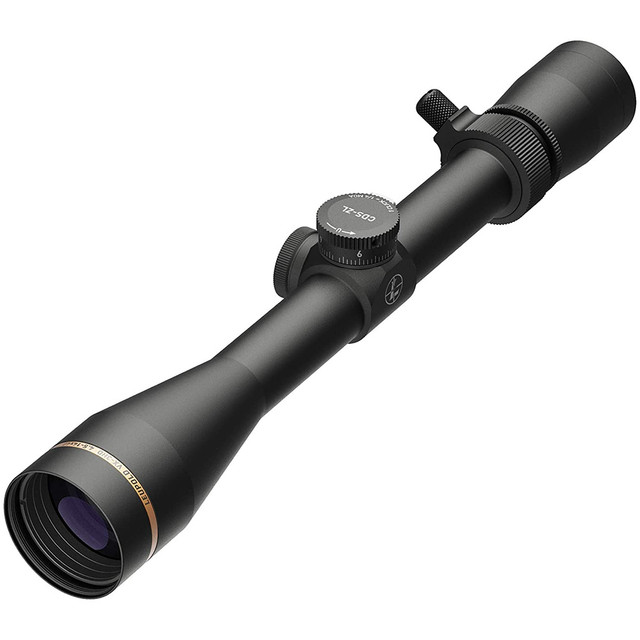
LEUPOLD VX-3HD 4.5-14x40 1in CDS-ZL Duplex Riflescope (180619)
$599.99
Price accurate at time of writing
Features:
- 3:1 zoom ratio
- Leupold's Custom Dial System (CDS) gives you the ability to customize your turret (adjustment dial) to your exact ballistics and environmental conditions
- The ZeroLock system eliminates accidental dial movement by locking it in place
- Aluminum offers excellent durability and ruggedness without adding unnecessary weight
- A traditional eyepiece lock ring allows you to lock in a focus setting that is best for your eye
- Hardened surface coatings are added to meet extreme military standards in scratch resistance and added lens protection
- Waterproof, Fogproof and Shockproof
And if you want a budget-friendly option, the Vortex Crossfire II is your best bet. It’s a sturdy riflescope with the nice Dead-Hold BDC (Bullet Drop Compensation) reticle.
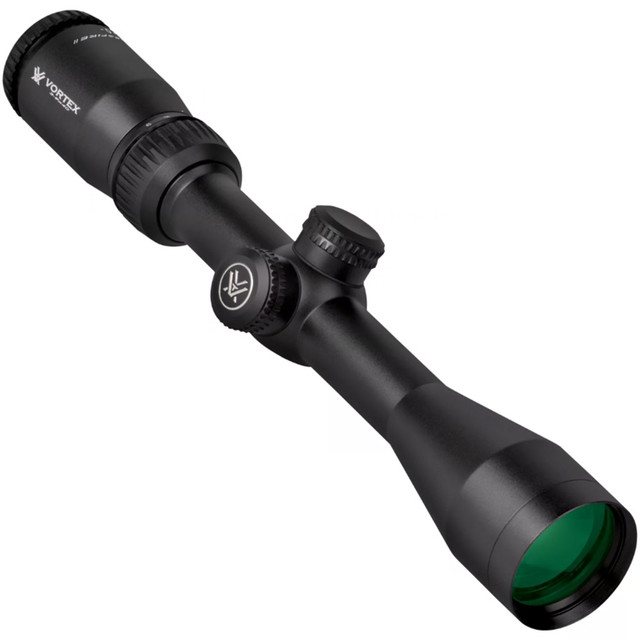
VORTEX Crossfire II 3-9x50 Straight-Wall BDC Riflescope
$169.00
Price accurate at time of writing
Features:
- Built on 1" aircraft-aluminum tubes
- Longer, more forgiving eye relief
- Fast-focus eyepiece
- Fully multi-coated lenses deliver amazing light transmission and edge-to-edge clarity
- Resettable MOA turrets for instant adjustment
- Vortex VIP Warranty
And if you want a budget-friendly option, the Vortex Crossfire II is your best bet. It’s a sturdy riflescope with the nice Dead-Hold BDC (Bullet Drop Compensation) reticle.
Binoculars
A pair of binoculars is an indispensable part of any deer hunting gear kit. 10x42mm hunting binoculars are often seen as the jack-of-all-trades option. They provide a longer reach than 8x models, making it easier to identify the deer. When compared to 12x binoculars, they offer a broader field of view and eliminate the need for a tripod for stable viewing. The use of 42mm objective lenses is critical as they allow in more light than their smaller counterparts.
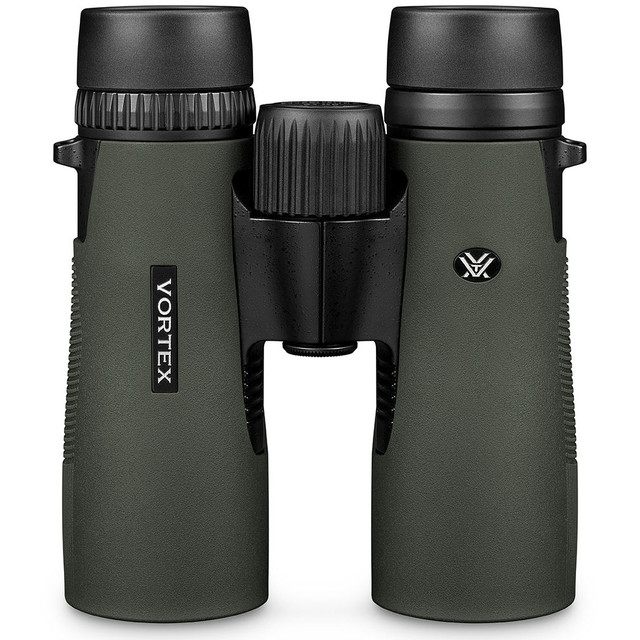
VORTEX Diamondback HD 10x42 Binocular
$249.00
Price accurate at time of writing
Features:
- HD Optical System delivers exceptional resolution, outstanding color fidelity, edge-to-edge sharpness and light transmission
- Fully Multi-Coated to increase light transmission
- Dielectric Coating provides bright, clear, color-accurate images
- Ultra-hard, scratch-resistant ArmorTek coating protects exterior lenses from scratches, oil and dirt
- Rubber Armor provides a secure, non-slip grip, and durable external protection
- Waterproof, shockproof and fogproof
- Roof Prism for greater durability and a more compact size
- Adjustable Eyecups for comfortable viewing with or without eyeglasses
- Diopter adjusts for differences in a user's eyes
Headlamp & Flashlight
It’s better to equip yourself with both a headlamp and a flashlight, as they have distinct uses. A headlamp is more suited for illuminating things near you and proves handy during field dressing. Certain models even offer red/green light modes that save your night vision. Since deer are red-green color blind, there’s no need to worry about startling them with these light modes.
On the other hand, a compact flashlight excels at casting light on far-off objects and is particularly useful when tracing blood trails.
Must-Have Treestand Deer Hunting Gear
Now, what specifically a treestand hunter should take care of? Let’s see.
First, a treestand bipod, like the Primos Pole-Cat, is a great asset for stabilizing your weapon. You can adjust it to suit your height and shooting position, which means you’ll be ready when that perfect shot presents itself.
Moving on, consider adding a gear belt to your hunting ensemble. The Sitka Optifade Elevated II Tool Belt is a prime example of functionality and convenience. This belt is thoughtfully designed to ensure all your hunting necessities are easily accessible. With it, you can avoid rummaging through your backpack and making noises that could potentially spook a deer.
Heated clothing, like the Pnuma Heated Core, is another deer hunter’s must-have for those chillier days out in the field. This line of clothing uses innovative technology to keep you warm without adding bulk, so you can focus on the hunt rather than battling the cold.
Finally, one of the most important accessories for any hunter using a treestand is a safety harness. Falling from a tree stand can result in serious injury, so it’s crucial to secure yourself with a reliable harness.
Full Deer Hunting Gear Checklist
Hunting camo (or solids for long-range hunting), blaze orange, clothing accessories (gloves, hat, mask)
Hunting boots or shoes, moisture-wicking socks
Knife & kill kit (rubber gloves, bone saw, ropes, deer drag harness, flagging, and game bags)
Rangefinder (with extra batteries) & binoculars
Hunting aids: deer calls, wind checker, scent blocker, doe estrous
Survival gear, food, water, personal stuff
Rain gear
Treestand supplies (pull-up rope, safety harness, gear hanger, bipod/shooting sticks, heated clothing)
Archery supplies (spare releases, string wax, spare nocks)
FAQ
For your first deer hunt, you’ll want to have a reliable hunting rifle or bow, ammunition or arrows, a blaze orange cap or vest, a pair of binoculars for spotting deer from a distance, and a hunting knife for field dressing. That’s basic deer hunting gear.
Dress in layers to adapt to changing weather conditions. Start with a moisture-wicking base layer to keep you dry, add an insulating middle layer for warmth, and finish with a waterproof outer layer for protection against rain or snow. Camouflage clothing that matches your hunting terrain can help you blend into your surroundings.
Avoid wearing bright whites, blues, and yellows as deer can see these colors clearly. Instead, opt for earth-toned colors or camouflaged gear that blends into the environment.
Yes, wearing blaze orange, also known as “hunter orange,” is not only OK but often required by law in many states during deer hunting season. Deer are colorblind to this shade, and it helps you stand out to other hunters for safety purposes.
Deer are more likely to spot you if you move, regardless of what you’re wearing. However, the blue color of denim jeans could potentially stand out in a natural environment, so it’s better to stick with camouflage or earth tones.
